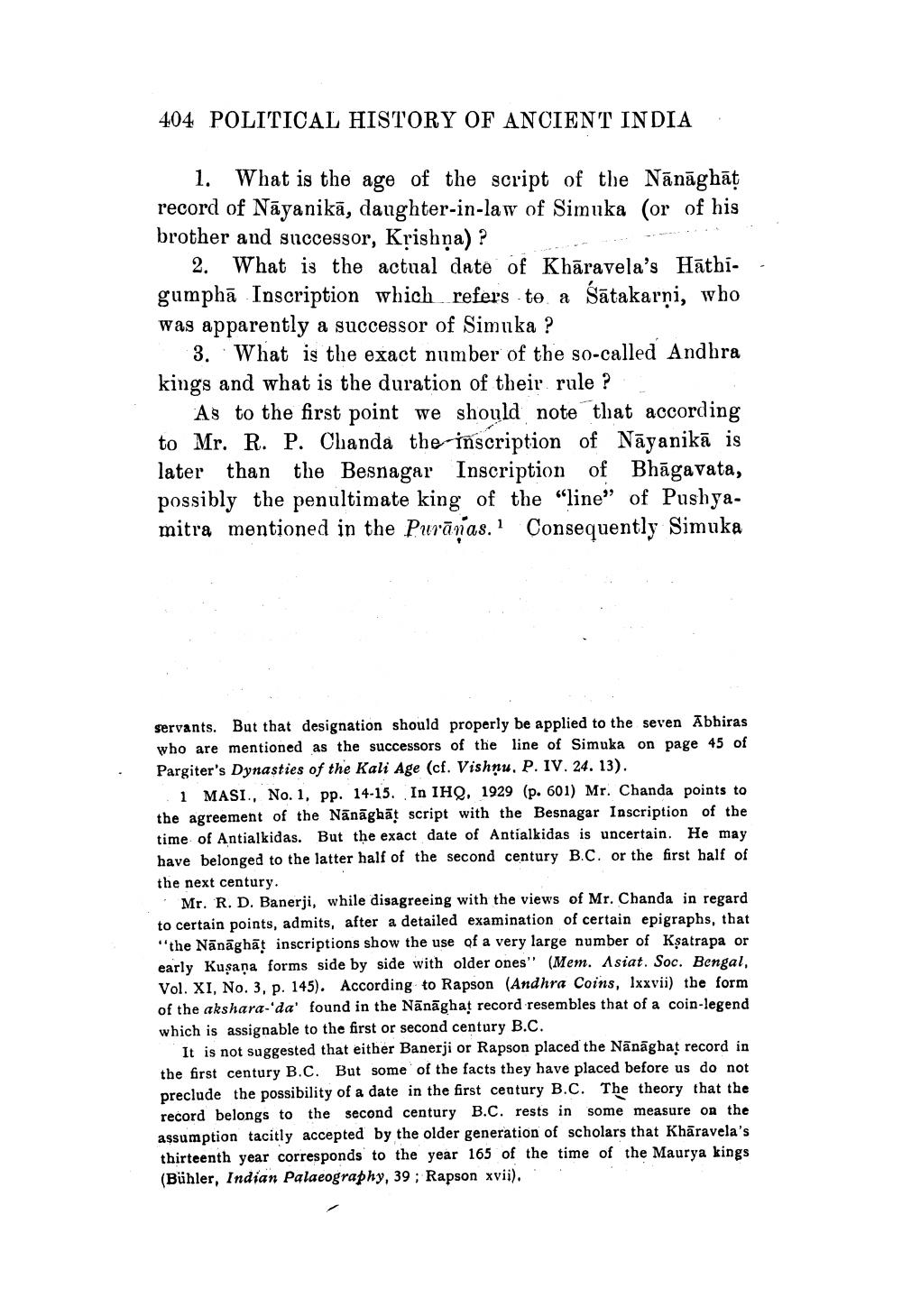________________
404 POLITICAL HISTORY OF ANCIENT INDIA.
1. What is the age of the script of the Nānāghāt record of Nāyanikā, daughter-in-law of Simuka (or of his brother and successor, Krishộa) ?
2. What is the actual date of Khāravela's Hāthi-- gumphā Inscription which refers to a śātakarņi, who was apparently a successor of Simuka ?
3. What is the exact number of the so-called Andhra kings and what is the duration of their rule ?
As to the first point we should note that according to Mr. R. P. Chanda the inscription of Nāyanikā is later than the Besnagar Inscription of Bhāgavata, possibly the penultimate king of the "line” of Pushyamitra mentioned in the Purāṇas.' Consequently Simuka
servants. But that designation should properly be applied to the seven Abhiras who are mentioned as the successors of the line of Simuka on page 45 of Pargiter's Dynasties of the Kali Age (cf. Vishnu. P. IV. 24. 13).
1 MASI., No. 1, pp. 14-15. In IHQ, 1929 (p. 601) Mr. Chanda points to the agreement of the Nānāghāt script with the Besnagar Inscription of the time of Antialkidas. But the exact date of Antialkidas is uncertain. He may have belonged to the latter half of the second century B.C. or the first half of the next century.
Mr. R. D. Banerji, while disagreeing with the views of Mr. Chanda in regard to certain points, admits, after a detailed examination of certain epigraphs, that "the Nānāghāt inscriptions show the use of a very large number of Ksatrapa or early Kuşaņa forms side by side with older ones" (Mem. Asiat. Soc. Bengal, Vol. XI, No. 3, p. 145). According to Rapson (Andhra Coins, lxxvii) the form of the akshara-da' found in the Nānāghat record resembles that of a coin-legend which is assignable to the first or second century B.C.
It is not suggested that either Banerji or Rapson placed the Nānāghat record in the first century B.C. But some of the facts they have placed before us do not preclude the possibility of a date in the first century B.C. The theory that the record belongs to the second century B.C. rests in some measure on the assumption tacitly accepted by the older generation of scholars that Khāravela's thirteenth year corresponds to the year 165 of the time of the Maurya kings (Bühler, Indian Palaeography, 39 ; Rapson xvii).




